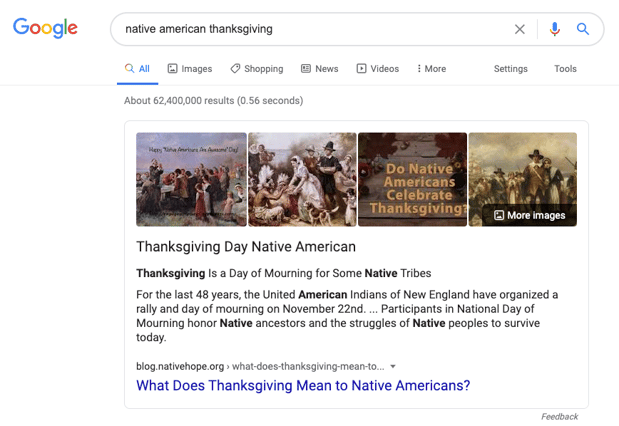SEO for Nonprofits: 4 Tips to Boost Your Organic Traffic

Every nonprofit has powerful stories to share, but without the proper online visibility, those stories often go unheard. In today’s digital landscape, search engine optimization (SEO) is one of the most effective and cost-efficient ways to help your mission reach more supporters, donors, and volunteers.
Keep reading for four practical, easy-to-implement SEO strategies designed to boost your organic traffic and grow your nonprofit’s impact online.
The Impact of Nonprofit SEO
"But we have such great stories."
We hear this all the time—and it’s true. Nonprofits are full of inspiring, mission-driven stories that deserve to be seen and shared. So why aren’t more people finding them?
When I first spoke with a nonprofit about SEO years ago, I dove into keywords, content strategy, and search rankings—and I lost them completely. They were overwhelmed, confused, and ready to dismiss content strategy for SEO as too technical or time-consuming.
However, after a clear, step-by-step explanation of how search engine optimization (SEO) works—and how it could help their stories reach a wider audience—they finally understood the value.
Just two years later, they saw more than 30,000 monthly sessions from organic search alone:
-1.png?width=1278&height=495&name=unnamed%20(4)-1.png)
Learn more: Read how we transformed a client’s anonymous website visitors into real donor cultivation opportunities.
What is Organic Search Engine Optimization?
Search engine optimization (SEO) is the process of optimizing your nonprofit’s website and content to improve its visibility in unpaid, or organic, search results on Google and other search engines.
For nonprofits, this means:
- Creating content that matches what your target audience is searching for
- Fixing technical issues on your website that can hurt search rankings
- Using keywords strategically throughout your web pages and blog posts
- Continuously improving your site to build credibility and authority
When done well, organic search optimization enhances your nonprofit’s online presence, facilitates connections with new supporters, and generates more meaningful traffic without incurring ongoing advertising costs.
4 Organic SEO Strategies You Can Implement Today
Nonprofit SEO doesn’t have to be complicated or expensive. In fact, improving your nonprofit's search visibility can be one of the most cost-effective ways to grow your audience.
With digital ad costs rising and organic reach declining across social media, SEO provides a sustainable way to drive high-quality traffic to your website at no cost.
There are many ways to improve your nonprofit’s SEO, but to help you get started, we’ve pulled together four impactful organic SEO hacks you can implement today. Each one is designed to help your nonprofit website rank better in search results and attract more of the right audience to your content.
1. Start with a Simple SEO Audit
An SEO audit helps you understand your website’s current health and reveals issues that may be holding back your rankings. While it might sound intimidating, tools like Neil Patel’s free SEO analyzer make this easy—just enter your website URL and receive a detailed report.
These audits highlight common problems such as slow page speeds, broken links, missing metadata, and other errors that can damage your site’s authority. For example, broken or dead links can harm the user experience and deter new visitors who are exploring your nonprofit for the first time.
Addressing issues found in an SEO audit is your first step toward improving search rankings and ensuring your audience sees and trusts your content.
2. Create Keyword-Rich, Evergreen Content That Ranks Over Time
In the nonprofit sector, it’s not uncommon for content marketing to be overlooked or done without a strategy. However, well-optimized content can dramatically increase organic traffic and help your mission reach a broader audience.
Start by conducting keyword research with free tools like Google Keyword Planner or Ubersuggest to discover what your audience is searching for (e.g., “how to volunteer locally” or “support homeless shelters near me”).
Then, create evergreen content—such as blog posts, FAQs, or other web pages—that answers these common questions and remains relevant in the long term. Use your keywords naturally in titles, headers, and throughout the body, and include internal links to related content to keep visitors engaged and informed.
- What is evergreen content? Evergreen content remains relevant and engaging to readers over an extended period. It provides value and drives traffic long after its initial publish date.
For example, Native Hope used keyword research to optimize a blog post about “Native American Thanksgiving.” By incorporating keywords and linking to other relevant pages, they increased their reach to a broader audience.

3. Optimize and Update Existing Pages
You don’t need to create new content all the time. Often, your best SEO wins come from improving what’s already on your website.
Review your top-performing pages using tools like Google Search Console or HubSpot for nonprofits. Add relevant keywords to headings and copy, improve page clarity, and include internal links to new or related resources.
And, if you haven’t fixed the broken links you discovered in step one, now is the time. Ensure that broken or outdated URLs are redirected to active, meaningful content, such as a live fundraising campaign or the latest impact report. This helps maintain a smooth user experience and strengthens your website’s overall SEO.
4. Optimize Meta Descriptions and Title Tags for Higher Click-Through Rates
Meta descriptions and title tags are the snippets shown in search results that often determine whether users click your page.
Nonprofits sometimes have similar pages—such as regional program pages—which can result in duplicate or generic titles and descriptions. This can hurt your rankings and reduce clicks.
Ensure each page features a unique, keyword-rich title and meta description that clearly explains the content and encourages users to visit your site.
For example, Divine Word Missionaries improved their ranking for the phrase “connection between peace and justice” by updating a meta description to include the word “connection.” This simple change helped their page reach #2 on Google, demonstrating the power of optimized metadata.
.png?width=954&height=317&name=unnamed%20(6).png)
SEO for Charities and Nonprofits—Made Simple with Novus
These four SEO tips are just the beginning of a successful organic search strategy. SEO is an ongoing process that requires regular updates, audits, and content improvements. While this cycle may feel never-ending, every iteration strengthens your nonprofit’s online authority and brings new supporters who might not have found you otherwise.
Best of all, SEO is a free, cost-effective way to expand your nonprofit’s reach in a competitive digital landscape.
If SEO feels like one more thing on your already full plate, you’re not alone. At Novus, our team specializes in helping nonprofits build sustainable, high-impact content strategies that drive real results.
Book a meeting with Novus’ director of nonprofit marketing, Jen Long, to discuss how we can help your nonprofit do good—better.


